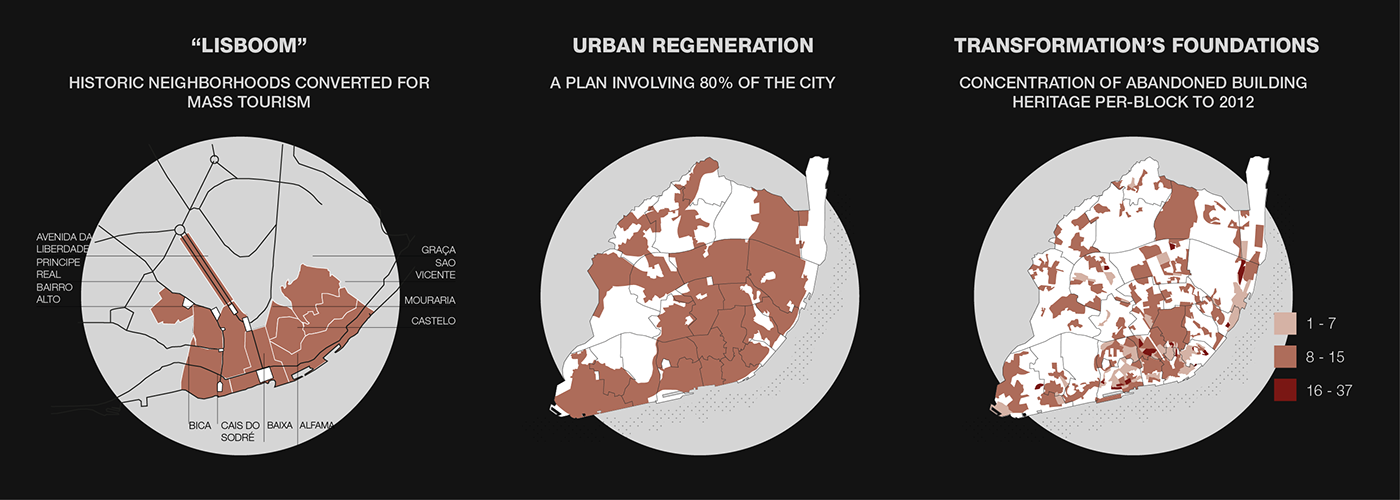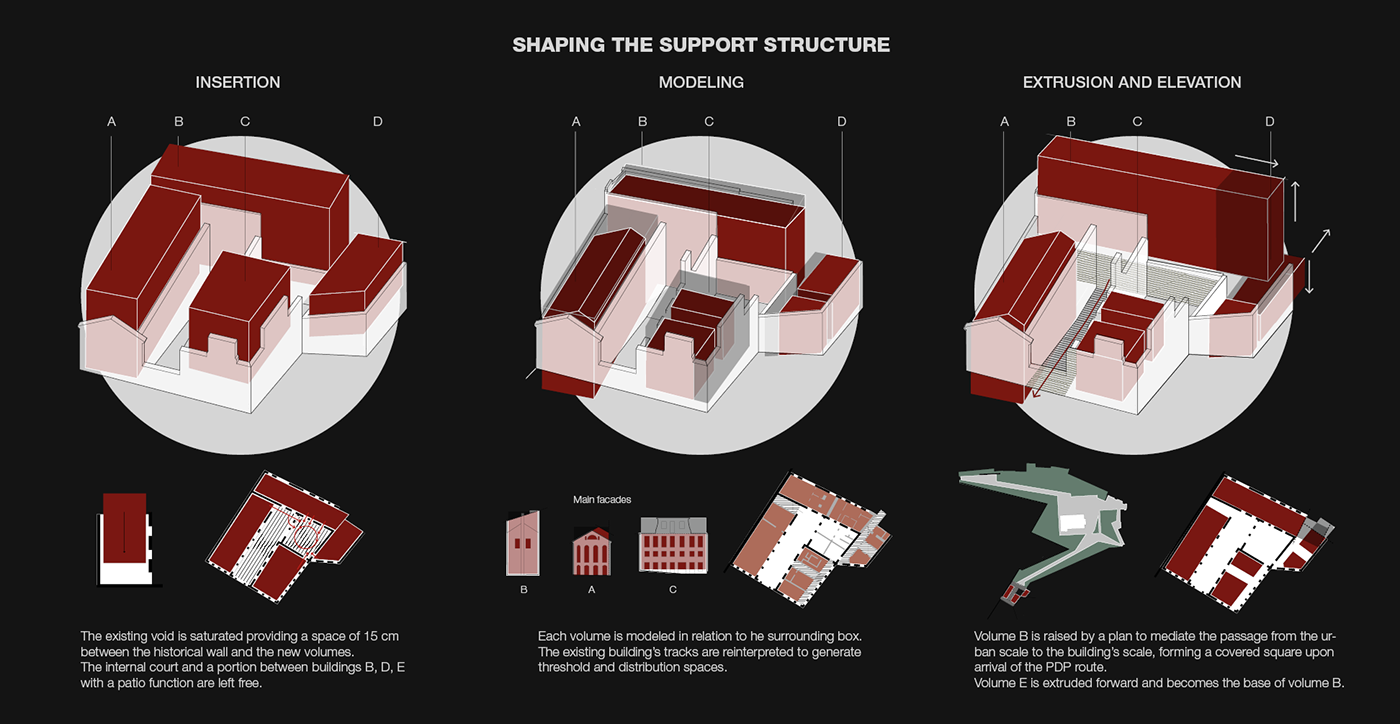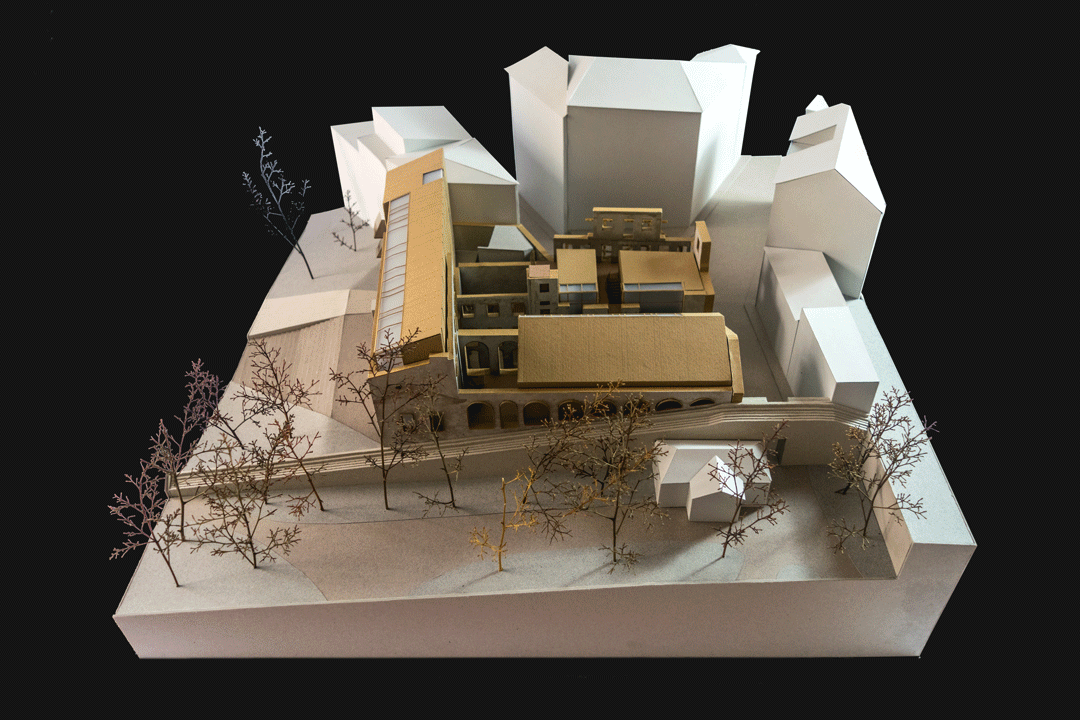Thesis Project brought up with Marco Borsotti and Sonia Pistidda from Politecnico di Milano and Fernando Sanchez Salvador from FAUL.
The project is about the urban regeneration of Rua da Alegria, in Santo Antonio’s Freguesia, in Lisbon, through the addition of a Social Hub, using the abandoned buildings along the street. We focused on the restoration of the main building of the system, located in Rua da Alegria 78/104, now in complete abandon.
The project’s conception starts from an analysis of the heavy social changes occurring in the city in these last years, which are caused by a process of economic improvement. Lisbon is fastly becoming a touristic-machine with services and facilities for the satisfaction of the foreign visitors.

We have investigated the effects of increasing tourism at all scales: from the rehabilitation plans on the whole city to the effects on freguesias and small neighborhoods. Along with those we tried to understand what have and what will be the consequences of gentrification for the city.

Santo Antonio is rapidly changing.
The intense refurbishment activity on Avenida da Liberdade and Rua da Escola Politecnica, main tourist axis, is almost completed.

The connection between Avenida and Rua da Escola Politecnica is to be realised along Rua da Alegria. This will be achieved joining the former Parque Mayer with the Botanic Garden. The municipal plan is going to heavily modify Parque Mayer's morphology with a high number of demolitions and the insertion of housing, retail and cultural services.
The prevision for the neighborhood is the total conversion in a mass-tourism district, following the historic center's tendencies.

The project main task is trying to favor the permanence of the local inhabitants in the neighborhood.
The still abandoned buildings along Rua da Alegria will be restored to host a social hub. It will provide social/administrative functions (no-profit) and affordable housing, services to tourists, students and startups (profit). In this way it could be economically independent. It could also be a part of the already consolidated "Incubadoras de Lisboa" network.





Rua da Alegria 78-104 complex was composed of four different buildings (factory, manor house, workers apartments) around a narrow courtyard. The complex is today in a complete ruin state, with only the perimetral walls standing. This was caused by a demolition process, started in the 90's, and a consequent abandon lasted until today. On the Rua da Alegria facades, two metallic scaffoldings have been set up to preserve the main urban facades from collapse.
The project aims to preserve every sign that time has left on the building. It tries to enhance all the historical layers that have alternated and also consideres demolition as one of them. We want the building to comunicate his complex story by itself, preserving its uncompleted-state. To achieve this every facade is going to be consolidated and the new building is going to ensure just punctual sustains.
One scaffolding will be preserved as well, becoming the project's catalyzer.

We tried to undesrstand if the building's leftovers can still generate a new historic layer in resonance with it. Therefore we tried to conceive the new building from the reinterpretation of the pre-existence's traces . In any case we wanted it to be distinguishable from the pre-existence both in terms of shape and materials.

So, how to unite two different objects in one complete new organism? We shaped the new volumes in order to create empty spaces that have the function to connect old and new building. Those, infact, are not just thresholds. In those spaces the visitor is neither inside the new building, neither inside the old one; he is inside the entire complex. Void connects past and present, the building scale to the urban scale.



The relationship between existing and new building in enhanced in the interiors. We studied the old fachades rhytm to generate different situations in each different interior.


Finally the counterposition of planar surfaces behind the damaged walls, has the aim of highlighting even more the complexity of what is left of the preexistence







Thank you for visiting










